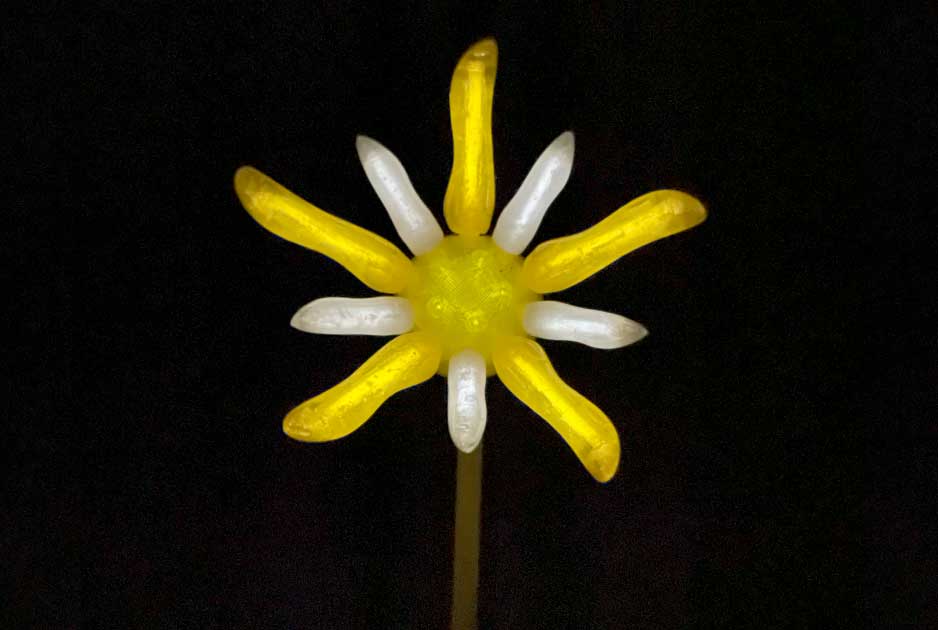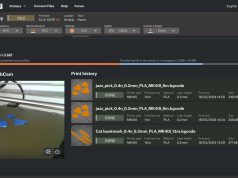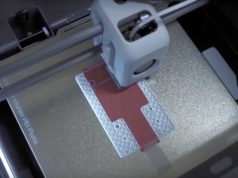3D-printed luminous objects are nothing unusual, but they are usually based on conventional light sources or light-emitting diodes. The artificial flower project called “Night Blossom” by the maker Mike Ogrinz takes a different approach: using the radioactive isotope tritium, the flower is supposed to glow for decades.
This is made possible by the excitation of phosphor particles by the tritium molecules. Unlike commercially available fluorescent paints, the flower does not need to be exposed to daylight or UV light. The tiny tritium tubes required are often components of watches or key rings.
For the implementation, Ogrinz integrated several of these tubes into the petals of the flower as well as others in the center. The design of the flower was implemented using FDM and resin printing. According to Ogrinz, the permeable FDM plastic structure ensures more even light diffusion than a solid resin version. The latter was nevertheless used as an alternative.
Although the quantities used are minimal, caution is required with tritium as a radioactive substance: gloves should be worn when handling it and direct contact or even inhalation when the tubes break should be avoided. According to experts, however, radiation exposure from intact watches or luminous objects is harmless.
Mike Ogrinz published a more detailed explanation of the development on Instructables.
Subscribe to our Newsletter
3DPResso is a weekly newsletter that links to the most exciting global stories from the 3D printing and additive manufacturing industry.
























